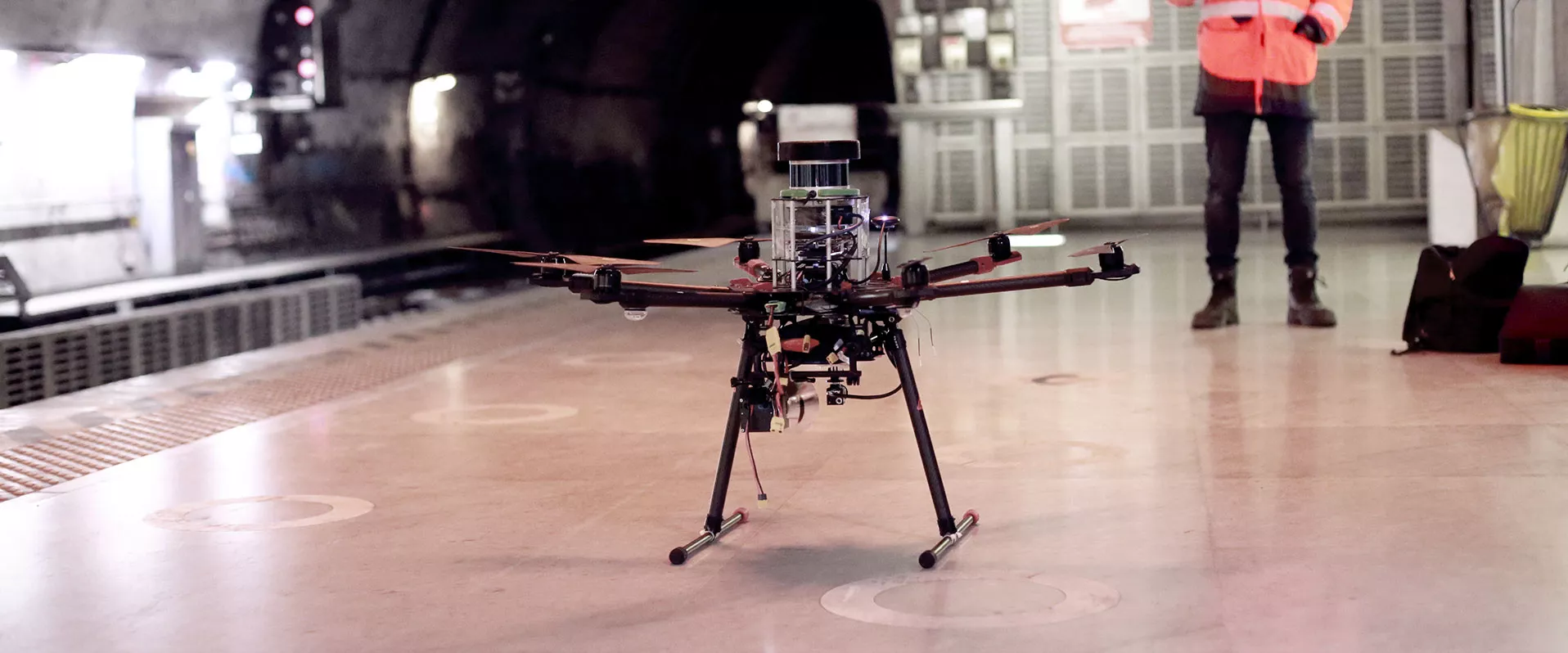
Humans and machines
The Robots & Humans group is part of SNCF’s Technology, Innovation and Group Projects Division. It was set up to promote development of robots for the rail industry and help get them into production.
Robots have enormous potential to serve both our passengers and our employees—by clearing snow, cleaning rolling stock, carrying out repairs and more. “Connected objects can help us monitor track and trains more effectively. Algorithms can help us make better decisions. But robots are the only technology that can help us with the last step—action,” says Louis-Romain Joly, head of the Robots & Humans unit in SNCF’s Technology, Innovation and Group Projects Division.
Benefits for customers and employees
Today, when we have a problem in a tunnel, we have to send in a maintenance worker—which means traffic is disrupted while we make the initial diagnosis. But if a robot inspected the tunnel, it could cut assessment time from 2 hours to 30 minutes.
That’s a big step forward, especially during peak periods. And if a robot could reach the incident site on its own, it would end human exposure to harsh, damp tunnel environments, where hazards include pollution and every imaginable form of waste.
Exoskeletons in maintenance centres
We’re also using exoskeletons to support SNCF employees. Yonnel Giovanelli, head of the ergonomics unit in our Rolling Stock Division, has co-developed a prototype for our workshops. Thanks to this high-tech equipment, our maintenance technicians now carry less weight and can avoid uncomfortable working positions.
Building a robot brick by brick
“We’re not here to make robots ourselves. Our job is to show robotics experts why it’s in their interest to develop products we can use in rail,” says Louis-Romain Joly.
Every robot is a collection of “technological bricks”—software, sensors and more. A “middleware” program helps them work together. Thanks to this software, we don’t have to recode each new robot from the ground up.
Robotics and diplomacy
If more and more players in the rail industry adopt the same middleware, it will be more profitable for robotics suppliers to develop technology bricks that work with it. Which why Louis-Romain Joly has been on the phone with his German, Italian, Norwegian, Swedish and British counterparts since his very first day on the job. His outreach and “diplomatic” efforts to win them over are backed by Europe’s Rail, an initiative that aims to expand rail-oriented robotics in the European Union.
Twofold challenge
Louis-Romain Joly and his team face a double challenge:
- understand robotics technology well enough to communicate effectively with specialists
- give these specialists incentives to develop technology bricks for the robots we need to assemble.
Meanwhile, our team is running tests and building prototypes for tomorrow’s rail robots. Their tasks will include clearing weeds from track, removing snow from platforms, inspecting catenaries and line, disinfecting trains and more.
Once the bricks are developed, a new marketplace—similar to Google Play or the App Store—could drive scale-up.
3 questions for Louis-Romain Joly
Will robots replace railway workers?
A robot is only a tool. Just as it’s easier to drive a nail with a hammer than with your hand, it will be easier for a rail technician to replace a 10-kg brake block with help from a robot. In the rail industry, we want to develop robots that let us combine high performance and well-being in the workplace. Other sectors have opted to focus solely on productivity. That’s not what we want to do.
When will robots serve SNCF customers?
As soon as we can, we’ll expand our work to include customer service robots in stations and aboard trains. For example, we’re already thinking about a robot that could remove snow from platforms. By contrast, in-station robots will have to deal with large crowds and very diverse groups of people, so rolling them out is a more complex task. It also demands a wide range of technical skills.
What are you working on now?
Under the Europe’s Rail programme, we’ll be working on a multifunction robot for infrastructure inspections, plus another that will disinfect the passenger areas of trains and maybe even small stations.
Our partners
- Partners at SNCF: Transilien, Fret and SNCF Réseau
- Outside partners: euroDAO, Generation Robots, WPWEB and more
- Partners in academia: the Robotics by Design Lab chair, backed by the Strate Design School, CESI and other industrials
- European research projects include Europe's Rail and ESMERA
Share the article